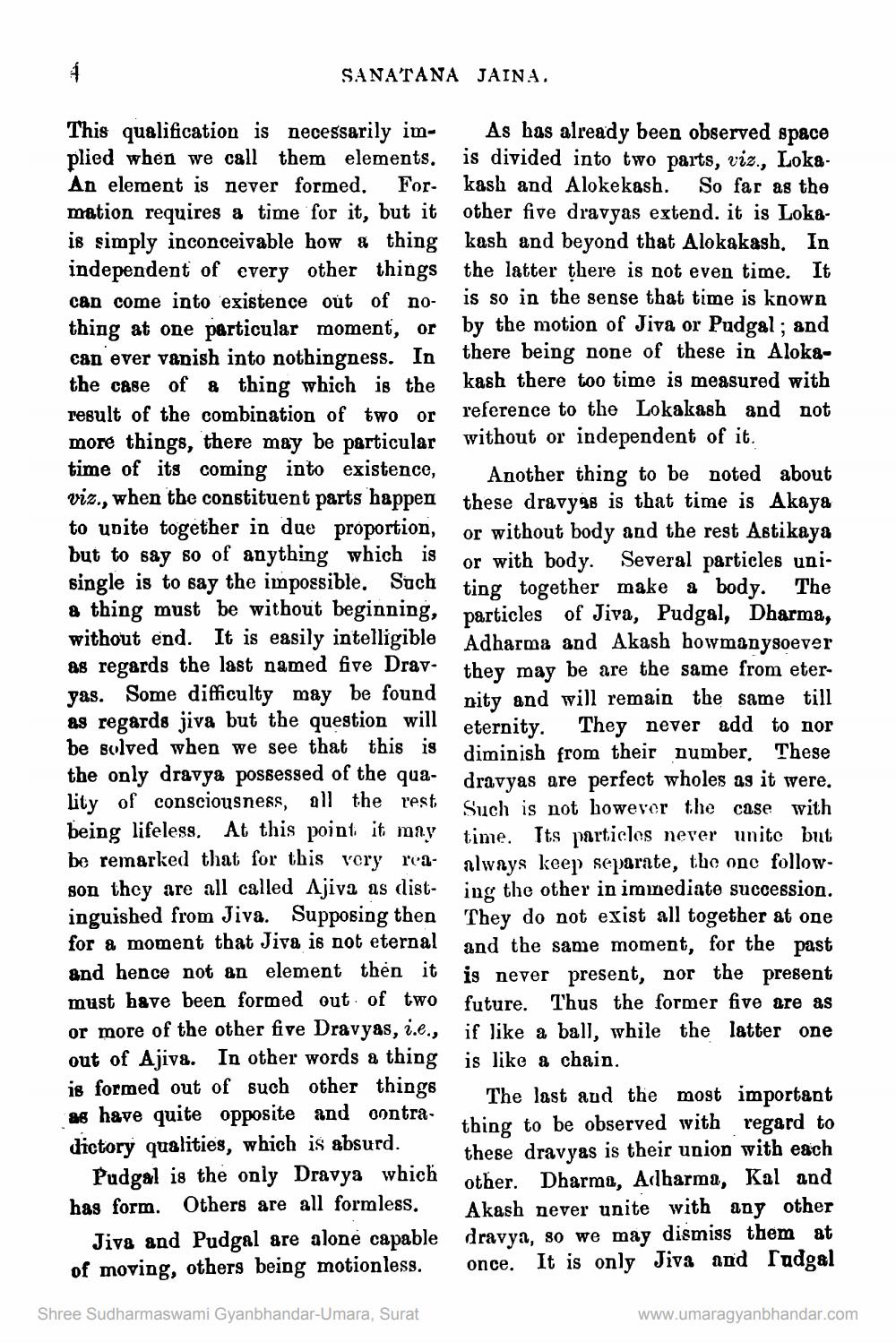Book Title: Sanatan Jain Author(s): Unknown Publisher: ZZZ Unknown View full book textPage 5
________________ 4 This qualification is necessarily implied when we call them elements. An element is never formed. Formation requires a time for it, but it is simply inconceivable how a thing independent of every other things can come into existence out of nothing at one particular moment, or can ever vanish into nothingness. In the case of a thing which is the result of the combination of two or more things, there may be particular time of its coming into existence, viz., when the constituent parts happen to unite together in due proportion, but to say so of anything which is single is to say the impossible. Such a thing must be without beginning, without end. It is easily intelligible as regards the last named five Dravyas. Some difficulty may be found as regards jiva but the question will be solved when we see that this is the only dravya possessed of the quality of consciousness, all the rest being lifeless. At this point it may be remarked that for this very reason they are all called Ajiva as distinguished from Jiva. Supposing then for a moment that Jiva is not eternal and hence not an element then it must have been formed out of two or more of the other five Dravyas, i.e., out of Ajiva. In other words a thing is formed out of such other things as have quite opposite and contradictory qualities, which is absurd. SANATANA JAINA. Pudgal is the only Dravya which has form. Others are all formless. Jiva and Pudgal are alone capable of moving, others being motionless. Shree Sudharmaswami Gyanbhandar-Umara, Surat As has already been observed space is divided into two parts, viz., Lokakash and Alokekash. So far as the other five dravyas extend. it is Lokakash and beyond that Alokakash. In the latter there is not even time. It is so in the sense that time is known by the motion of Jiva or Pudgal; and there being none of these in Alokakash there too time is measured with reference to the Lokakash and not without or independent of it. Another thing to be noted about these dravyas is that time is Akaya or without body and the rest Astikaya or with body. Several particles uniting together make a body. The particles of Jiva, Pudgal, Dharma, Adharma and Akash howmanysoever they may be are the same from eternity and will remain the same till eternity. They never add to nor diminish from their number. These dravyas are perfect wholes as it were. Such is not however the case with time. Its particles never unite but always keep separate, the one following the other in immediate succession. They do not exist all together at one and the same moment, for the past is never present, nor the present future. Thus the former five are as if like a ball, while the latter one is like a chain. The last and the most important thing to be observed with regard to these dravyas is their union with each other. Dharma, Adharma, Kal and Akash never unite with any other dravya, so we may dismiss them at once. It is only Jiva and Tudgal www.umaragyanbhandar.comPage Navigation
1 ... 3 4 5 6 7 8 9 10 11 12 13 14 15 16 17 18 19 20 21 22 23 24 25 26 27 28 29 30 31 32 33 34 35 36 37 38 39 40 41 42 43 44 45 46 47 48 49 50 51 52 ... 412
